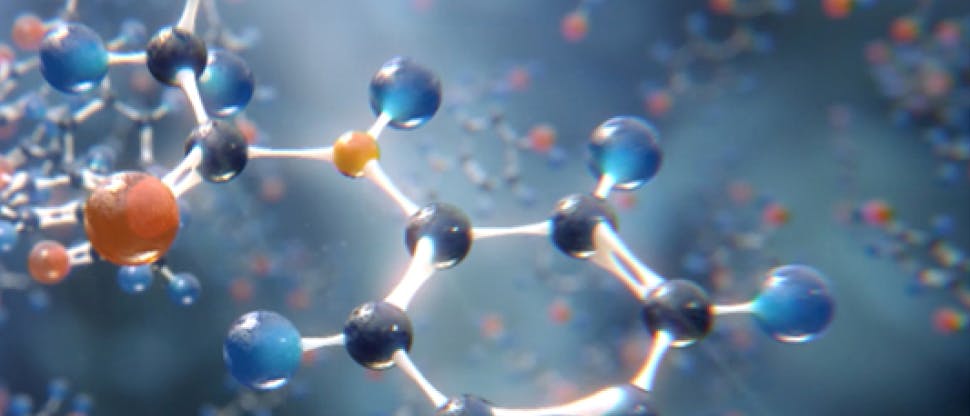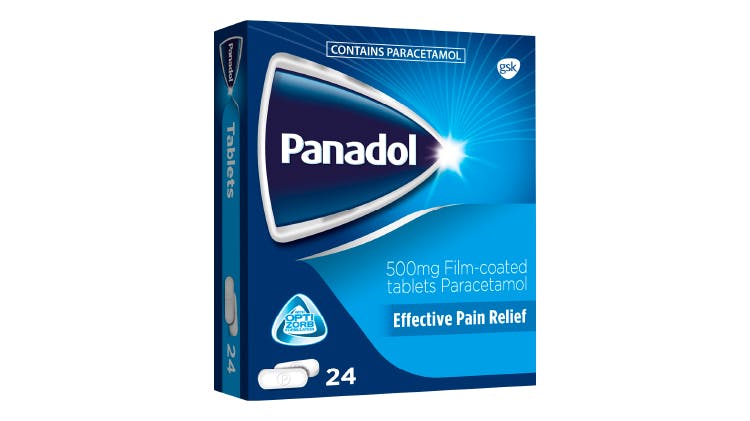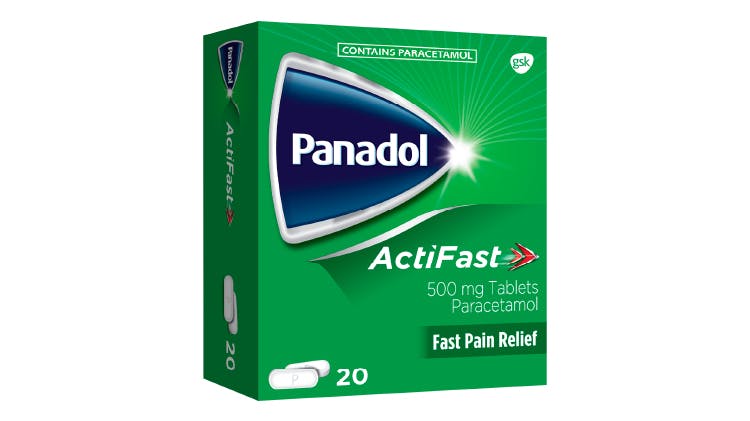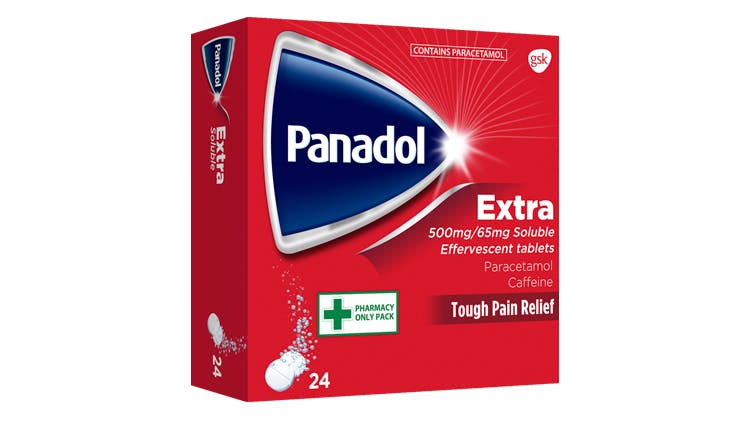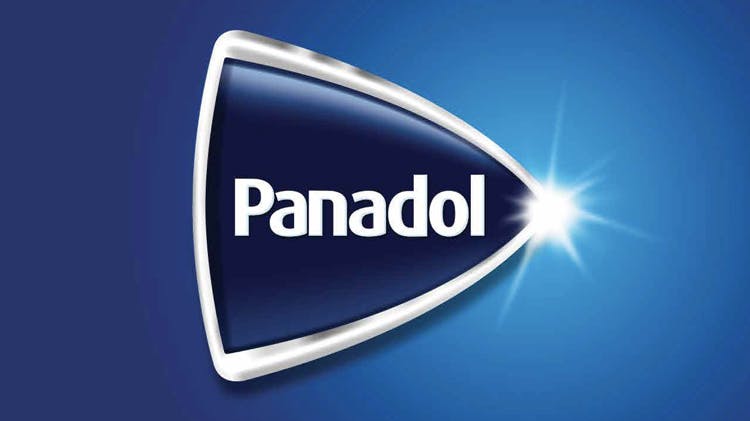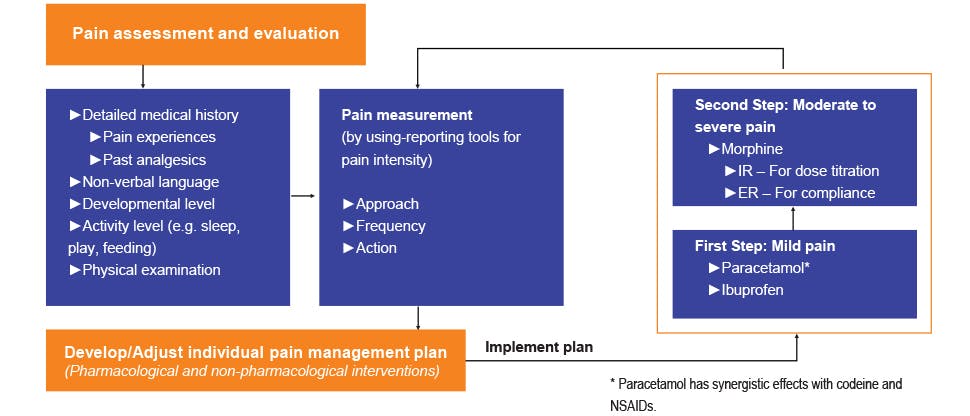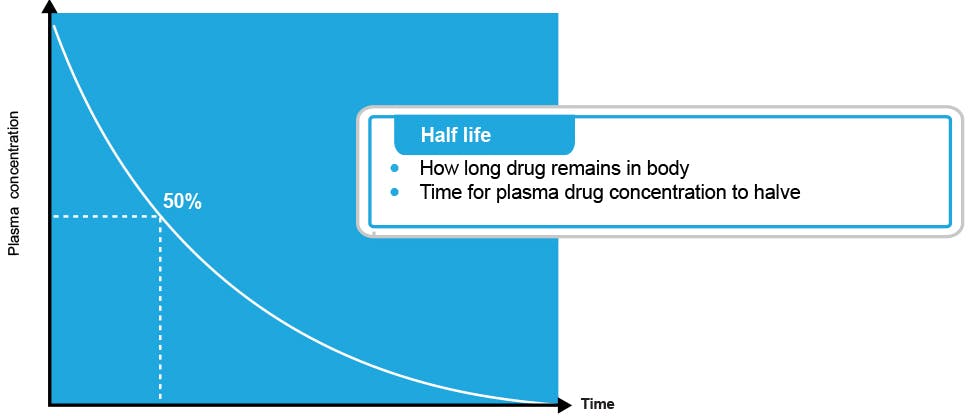Product Information: Please consult the summary of product characteristics for full product information. Panadol 500mg Film Coated Tablets (paracetamol), Panadol Actifast Tablets 500mg (paracetamol), Panadol Extra 500mg/65mg Soluble Effervescent Tablets (paracetamol, caffeine), Panadol Night Film-coated Tablets (paracetamol, diphenhydramine hydrochloride), Panadol Baby 120mg/5ml Oral Suspension (paracetamol). Indications 500mg Film Coated, Actifast & Extra Soluble Effervescent Tablets: Short-term management of headaches, musculoskeletal disorders, menstrual pains, toothache, symptoms of colds and flu. Night: Short-term treatment of bedtime symptoms of cold and flu pain, rheumatic and muscle pain, backache, toothache, headache, menstrual pain. Baby: Short term pain relief of teething, toothache and sore throats and for fever reduction associated with colds and flu and childhood infections. Dosage Minimum dosing interval between paracetamol containing products is 4 hours. The lowest dose necessary to achieve efficacy should be used. 500mg Film Coated Tablets: Adults and children 16 years and over: 1-2 tablets, up to 4 times daily as required. Children aged 10-15 years of age: 1 tablet, up to 4 times daily as required. Max 4 doses in 24 hours. Do not give to children for more than 3 days without consulting a doctor. Do not give to children under 10 years. Actifast Tablets: Adults and children 16 years and over: 1-2 tablets up to 4 times daily as required. Children aged 12-15 years: 1 tablet up to 4 times daily as required. Max 4 doses in 24 hours. Do not give to children for more than 3 days without consulting a doctor. Do not give to children under 12 years. Extra Soluble Effervescent Tablets: Adults and children 16 years and over: 2 tablets up to 4 times a day. Children aged 12-15 years: 1 tablet up to 4 times a day. Do not exceed 4 doses in 24 hours. Do not give to children under 12 years. Night: Adults and children 16 years and over: 2 tablets, 20 minutes before bed. Children aged 12-15 years: 1 tablet, 20 minutes before bed. Other products containing paracetamol may be taken during the day but the total daily dose of paracetamol must not exceed 4000mg for adults and 2000mg for children aged 12-15 years. Do not give to children under 12 years except on medical advice. Do not use for more than 7 consecutive nights without medical advice. Baby: Aged 2-3 months: Post vaccination fever and other causes of pain and fever only if weighs over 4 kg and born after 37 weeks: One 2.5 mL measure. If necessary, after 4-6 hours, give a second 2.5 mL dose. Do not give to babies less than 2 months of age. Do not give more than 2 doses. Leave at least 4 hours between doses. If further doses are needed, talk to your doctor or pharmacist. 3-6 months: 2.5 mL per dose; 6-24 months: 5 mL per dose; 2-4 years: 7.5 mL per dose; 4-8 years: 10 mL per dose; 8-10 years: 15 mL per dose; 10-12 years: 20 mL per dose. Do not give more than 4 doses in any 24-hour period. Do not give this to your child for more than 3 days without speaking to your doctor or pharmacist. Contraindications All: Hypersensitivity to paracetamol or any of the other ingredients. Night: Closed angle glaucoma, porphyria. Precautions All: Do not use with any other paracetamol-containing products. Patients with depleted glutathione levels / glutathione depleted states, chronic alcoholism or sepsis. Underlying liver disease, liver or kidney impairment. Do not exceed the stated dose. Prolonged use except under medical supervision may be harmful. Caution, due to paracetamol, if administered with flucloxacillin due to increased risk of high anion gap metabolic acidosis. Actifast Tablets: Contains 352 mg sodium per 2 tablet dose, use with caution in those on a low sodium diet. Extra Soluble Effervescent Tablets: Avoid excessive caffeine intake. Caution in those with hereditary sugar intolerance or on a low sodium diet. Night: Avoid use with alcohol. Use with caution in the elderly and avoid use in elderly patients with confusion. Avoid concurrent use with sedatives (including hypnotics and anxiolytics), antimuscarinics and other antihistamines. Caution in those with epilepsy or seizure disorders, myasthenia gravis, narrow angle glaucoma, prostatic hypertrophy, urinary retention, asthma, bronchitis, COPD or with any form of glucose-galactose malabsorption or lactase deficiency. Avoid use of MAOIs within 2 weeks. Side Effects For a full list of side effects please refer to the relevant SPC. All very rare: Thrombocytopenia, hypersensitivity reactions including anaphylaxis and skin rash, angioedema, Stevens-Johnson syndrome, Toxic Epidermal Necrolysis, serious skin reactions, bronchospasm, hepatic dysfunction Extra Soluble Effervescent Tablets: When combined with dietary caffeine intake, higher doses of caffeine may increase potential for caffeine related adverse events. Night: Common (diphenhydramine): Fatigue, sedation, attention disturbance, dizziness, unsteadiness, dry mouth. Legal Category 500 mg Film Coated & Actifast Tablets: <12 Tablets GSL; <24 Tablets Pharmacy Only. Extra Soluble Effervescent Tablets & Night: Phamacy Only. Baby: 60 ml GSL; 100 ml Pharmacy Only. MA Number: 500 mg Film coated Tablets: PA 678/107/1; Actifast Tablets: PA 678/39/12; Extra Soluble Effervescent Tablets: PA 678/39/10; Night: PA 678/39/8; Baby: PA 678/39/3. MA Holder: Haleon Ireland Limited, 12 Riverwalk, CityWest Business Campus, Dublin 24. Text prepared: October 2023. Further information available on request.
Contains Paracetamol. Always read the label/leaflet.
